If you’ve landed on this article, chances are, you’re struggling to find food recipes that complement Inflammatory Bowel Diseases, like Ulcerative Colitis or Crohn’s Disease. There are so many different diets out there for IBDs – it can get overwhelming to find, choose and stick to a diet. Don’t worry though, you’re in the right place! In this article, I’ll go over the recommended diet types for Ulcerative Colitis patients and some tasty recipes to go with each diet.
If you aren’t already aware, Ulcerative Colitis is a type of Inflammatory Bowel Disease (IBD) that causes inflammation in your digestive tract. Ulcerative Colitis mostly affects the innermost lining of your large intestine (colon) and rectum and can cause ulcers and overall cramping pain throughout your large intestine. Are you interested in learning more about Ulcerative Colitis? Click here to read my other article on Ulcerative Colitis where I go more in-depth about UC diets. Now, let’s cut to the chase and get into some food practices that may help treat you or your loved one’s Ulcerative Colitis symptoms.
What You Should Know About Food When You Have Ulcerative Colitis
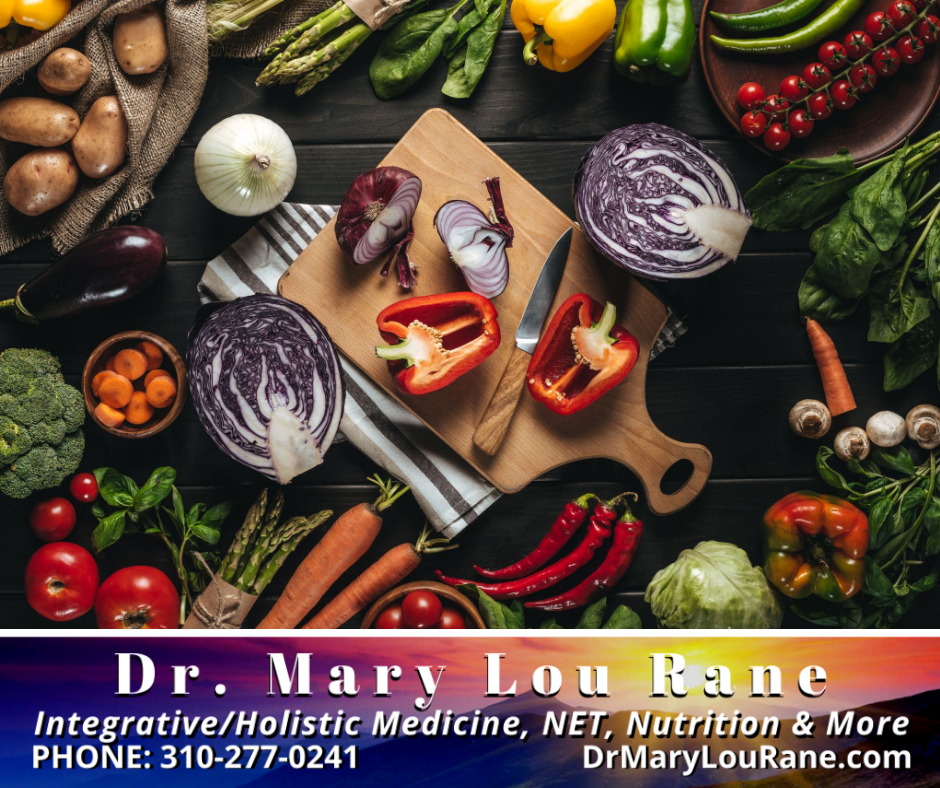
Dealing with a chronic bowel disease like Ulcerative Colitis is often disheartening and frustrating as there is no universal solution in managing your symptoms. Everyone’s bodies are different, and what works for one person, may not work for another person. Paying attention to your diet and the produce you consume can help you recognize a lot about what your body can and can’t tolerate.
When you have an inflammatory bowel disease, it’s important to source your produce from reputable growers that don’t use pesticides or fungicides. A specific pesticide, that goes by the name of glyphosate, is known to be particularly harsh on gut microbes, which in turn could be contributing to discomforting symptoms and amplifying your Ulcerative Colitis symptoms. Changing your diet and sourcing produce without pesticides is one way you can decrease flare-ups.
Another tip given to those who suffer from IBDs is to make sure the produce they consume is seedless, skinless, and low in fiber. High fiber foods are a detriment to your bowel movements as they are hard to digest, cause bloating, and may cause a flare-up. Cooking veggies and fruits you consume, whenever possible, may also help prevent a flare-up. Boiling, baking, or roasting your produce may help break down dietary fiber, making it easier for your intestines to digest.
There are certain fruits and vegetables, like sweet potatoes, cucumbers, bananas, and berries that are said to be light on the stomach as they aren’t acidic, they aren’t high in sugar, and their textures are soft when prepared properly. These soft-textured fruits and vegetables are said to be less abrasive on an inflamed colon. Conversely, whole nuts, raw fruits, green raw vegetables, like broccoli and cauliflower are bound to give you a tummy ache and inflammation as they are known to be foods with insoluble fiber that are hard to digest. Spicy foods, high-fat foods, sugary foods, processed foods, and foods that contain lactose (sugar found in dairy) can all be trigger foods for those who have Inflammatory Bowel Diseases, as most people have lactose intolerance.
The Importance Of Limiting Gluten
You’ve probably heard gluten being thrown around before, but what actually is Gluten, and why do so many people loathe it? Gluten is a type of protein (known as a prolamin) in grains like wheat, barley, and rye. Gluten is comparable to a “glue” that holds food together and is best known for its stretchy quality. Gluten is a staple in most processed foods available in grocery stores unless explicitly stated in the ingredients. Its naturally in most wheat products or any products that contain grains. Gluten is a detriment to those who have Ulcerative Colitis because it contains high levels of anti-nutrients. These anti-nutrients can bind with and interfere with the absorption and digestion of nutrients in your gut, which in turn causes inflammation.
Consumption of Gluten also releases zonulin in the body. Zonulin (a protein) is like an invader that has the ability to control the opening and closing of your gut lining. The release of zonulin is said to take over our natural selective gut habits, by basically taking your body’s gut lining opening hostage. This protein has a mind of its own and decides for itself when to open your gut lining’s junctions, even if opening the junction is detrimental to your gut health! Consuming gluten allows zonulin to open up your gut lining and let the anti-nutrients into your gut. Without gluten, your body naturally filters out these anti-nutrients. This gatekeeping can then lead to inflammation and gut irritation, which can make your symptoms worse in the long run.
Naturally, people who have any Inflammatory Bowel Disease already have trouble with inflammation, absorbing their food, and digesting their food. By continuing to consume gluten, you are likely adding to your already miserable symptoms.
Diet Types To Consider For Ulcerative Colitis
![]()
What diet type is best for those who suffer from Ulcerative Colitis? This is a question many have pondered on and struggled with throughout the history of irritable bowel diseases. There is no single diet proven to aid in decreasing UC symptoms. We definitely know it’s NOT a diet filled with inflammatory foods, but a diet filled with easily digestible nutritious food for your gut. There are a plethora of recommended diet types for those who suffer from UC. There’s the Mediterranean diet, the Low-FODMAP diet, the gluten-free and dairy-free diet. The only way to know what works best for you is to try an elimination diet or stick with a diet that prevents flare-ups and doesn’t upset your gut. How do you know what foods don’t upset your gut, you ask. Simply put, going through a period following one diet, meal planning, tracking your symptoms, and food intake with a food diary or food journal tracker will help you pinpoint what foods make you feel good (and provide health benefits), and what foods make you feel bad.
You might’ve read food diary, and immediately gotten anxious at the complexity of tracking your food and figuring out what your body can tolerate. Don’t be worried, or scared! Logging your food with a food diary isn’t as complex as it sounds. You can click here to download the My Fitness Pal mobile application that does all the work for you!
These tips should not be used for anything other than educational purposes. To develop a safe, personalized meal plan, you MUST work with your doctor or a dietitian.
The Low-FODMAP Diet
FODMAPs are a group of fermentable carbs that may aggravate your gut. The four groups of FODMAPs include oligosaccharides (wheat, rye, legumes, garlic, onions), disaccharides (dairy products: lactose, milk, yogurt, soft cheese, ice creams), monosaccharides (fructose, figs, mangos, honey, agave nectar), and polyols (blackberries, lychee, low-calorie sweeteners).
Essentially, the goal for a low-FODMAP diet is to strictly avoid high-FODMAP foods, like the ones I’ve listed below, for a short period of time: 3-8 weeks. After you have been on the Low-FODMAP diet for at least 8 weeks and notice that your gut symptoms have mostly resolved, you slowly introduce high-FODMAP foods to your diet again. In this step, you test specific foods one by one for about three days each to see how your body is reacting. The purpose of doing this is to identify which types (as there are four) of FODMAPs your gut is sensitive to and to establish the amount of FODMAPs you can tolerate in a serving. The reason you don’t avoid FODMAPs foods long-term is FODMAPs are important to your overall gut health. The key to the low-FODMAP diet is figuring out which FODMAPs you are sensitive to, what FODMAPs you can tolerate, and what amounts you can tolerate them in.
Remember, different FODMAPs groups may trigger symptoms that vary from person to person, so make sure to pay complete attention to your body while you’re adhering to this elimination diet!
High-FODMAP Foods To Avoid
- Dairy-based and lactose products like milk, yogurt, and ice cream
- Wheat-based products like cereal, bread, and crackers
- Beans and lentils
- Raw vegetables like artichokes, asparagus, onions, and garlic
- High-sugar fruits like apples, cherries, pears, and watermelon
- Artificial low-calorie sweeteners, or “sugar-free gum”
Low-FODMAP Foods Allowed
- Eggs and meat (chicken, turkey, and fish are best and lightest on your tummy)
- Some cheeses in moderation: brie, Camembert, cheddar, and feta
- Almond milk or Oat milk substitute
- Grains like brown rice, quinoa, and oats (no wheat products!)
- Cooked vegetables like eggplant, sweet potatoes, tomatoes, cucumbers, and zucchini
- Low-sugar fruits like grapes, oranges, blueberries, strawberries, and pineapple.
The Low-Residue or Low-Fiber Diet
The “residue” in low-residue is actually referring to fibrous foods your body can’t digest well, that end up in your stool. These foods are often undigested, unabsorbed, and contain bacteria or gastric secretions. The terms Low-Residue and Low-Fiber are basically one and the same and are used interchangeably to describe this diet.
A Low-Residue diet is a diet low in fiber that allows the digestive tract to rest. The goal is to limit your fiber intake to less than 10-15g per day and to restrict foods that can kickstart bowel activity. The diet was designed to reduce the amount and frequency of the stools you pass in order to reduce the painful symptoms caused by Ulcerative Colitis. A Low-Fiber diet also limits some other foods, such as dairy products, that can contain lactose which increases colonic residue and stool weight.
A Low-Residue diet can be beneficial for symptom management during flare-ups, increased abdominal pain, and inflammation. However, keep in mind that following a Low-Residue diet for a prolonged period may not be sustainable for you and might lead to nutrient deficiencies and constipation. Make sure to consult your dietitian or a nutritionist if you choose to follow this diet long-term.
High-Residue and Fiber-Rich Foods to Avoid
- Nuts, seeds, dried fruit, and coconut
- Wheat-based products, whole grains, quinoa, popcorn, and bran
- Brown rice, wild rice, oatmeal, and granola
- Dried beans, baked beans, peas, and lentils
- Chunky peanut butter
- Fruits and vegetables with skin, except those noted below
Low-Residue and Low-Fiber Foods Allowed
- Tender meat like fish and poultry, ham, bacon, and lunch meat
- Eggs, tofu, creamy peanut butter, rice-based cereals
- Up to 2 cups of dairy products daily (if you’re tolerant)
- White rice and pasta, baked goods made with refined wheat or rye flour (bread, biscuits, bagels, crackers)
- Canned or well-cooked vegetables like sweet potatoes, carrots, and green beans
- Low-sugar and low-fiber fruits like bananas, melons, applesauce, and canned peaches (no skin)
The Gluten-Free and Dairy-Free Diet
The main goal of a gluten-free and dairy-free diet is to take bothersome foods out of your diet so you can follow a diet plan that inhibits chronic inflammation. Gluten and dairy are said to be high on the list of culprits that cause inflammation, abdominal pain, and cramps. It’s said that removing these invasive proteins from your diet helps your body absorb more nutrients and reduce stress on the body. And, when you’re getting the proper nutrients for your body, you are less likely to have a weakened immune system that is subject to inflammation. No invaders = no inflammation!
During your trial period with the Gluten-Free and Dairy-Free diet, it’s said that increasing the nutrients in your diet will aid in reducing stress on your body. Your body can actually absorb the nutrients it needs when zonulin isn’t kicking in and altering your gut’s natural selective process. Taking nutrients such as Omega-3 Fatty Acids, antioxidants, minerals, vitamin D, and probiotics may help maximize the effectiveness of the Gluten-Free and Dairy-Free Diet.
Gluten and Dairy Foods to Avoid
- Any product that contains gluten. Make sure to read the ingredients list before purchasing a product.
- Any product that contains dairy. Make sure to read the ingredients list before purchasing a product.
- Dairy products like milk, ice cream, cheese, and yogurt
- Cereal, white bread, wheat bread, and any bread that isn’t gluten-free
- All alcohol except some wines, seltzers, and ciders
Gluten-Free and Dairy-Free Foods Allowed
- Fruits and vegetables: All fruits and vegetables are naturally gluten-free and dairy-free.
- Gluten-free grains like quinoa, rice, millet, and buckwheat
- Gluten-free and dairy-free bread brands like Udi’s, Katz, or Canyon Bakehouse
- Nuts and seeds like walnuts, almonds, almond butter, cashews
- All meats are naturally gluten-free and dairy-free
- Milk and dairy alternatives like almond milk, oat milk, cashew milk or coconut milk
The Mediterranean Diet
The Mediterranean diet isn’t a fancy diet by any means. The diet simply consists of nutritious food popular in Mediterranean countries like Cyprus, Egypt, Greece, Israel, Lebanon, Morocco, Turkey, and many others. This diet primarily consists of plant-based foods like fruits, vegetables, and healthy fats from oily fish.
Obviously, like the other diets we’ve covered, dairy products and heavily processed foods, like sour cream, white pasta, or crunchy nut butters are to be avoided. Additionally, the Mediterranean Diet also calls for the elimination of red meat and promotes the consumption of lean meat like chicken, turkey, and fish. Cutting down on processed foods, sticking to a plant-based diet, and eating real whole foods help with the amount of fiber ingested, which in turn aids with the passing of stool.
Foods to Avoid on the Mediterranean Diet
- High-fat foods, heavily processed foods, and meats, or foods high in sugar
- Dairy products, poultry, and red meat
- Eggs and some cheeses are allowed to be eaten in moderation
Foods Allowed on the Mediterranean Diet
- Fruits and vegetables of all kinds
- Whole grains like brown rice, quinoa, oats, whole grain pasta, and bread
- Nuts and seeds, beans and legumes
- Seafood and fatty fish like salmon, shrimp, sardines, and herring
- Omega-3 fats and healthy fats like avocados and olives, ghee
The Specific Carbohydrate Diet
The Specific Carbohydrate Diet was specifically designed to help treat Celiac disease, but it has since been recommended for Ulcerative Colitis, Irritable Bowel Syndrome, Inflammatory Bowel Disease, and Crohn’s Disease. The main takeaway from this whole article should be – some of our intestines don’t digest grains or sugars well!
The Specific Carbohydrate diet, like the Low-FODMAP diet is considered an elimination diet, which is a diet where you eliminate trigger foods during flare-ups to help battle your painful symptoms. On this diet, you eliminate carbohydrates that are complex to digest. You may be tired of hearing this, but the top two foods you need to quit on the SCD are grains and dairy. This diet can be hard to follow long-term since there are so many foods you have to eliminate, so don’t feel bad if you feel like you can’t keep up. Long-term diets aren’t really sustainable, which is why I suggest a trial period to see how your gut is feeling, but also to see how you’re managing mentally.
Foods to Avoid on the SPC Diet
- Canned or dried fruit processed with additional sugar
- Starchy vegetables like white potatoes, yams, or any canned tomato products
- Processed meats like deli meat, hot dogs, bacon, sausages, and spam
- Processed and breaded products, like chicken nuggets and canned products
- No dairy products like yogurt or butter
- No soft cheeses like feta, cream cheese, or ricotta cheese
- No refined grains or grains of any kind
- No canned beans or soy in any form
Foods Allowed on the SPC Diet
- All fresh and unprocessed fruit, organic is preferred
- Non-starchy unprocessed vegetables like mushrooms, asparagus, and brussel sprouts
- All fresh and frozen meats, organic preferred
- Plant-based milk like almond, coconut, or oat milk
- Hard cheeses aged over 90 days
- Nuts and seeds like pumpkin seeds, almonds, walnuts, pecans, and cashews
- Dried navy beans, lima beans, black beans, green string beans, and lentils
Simple And Delicious Recipes for Ulcerative Colitis
Now that we’ve gone over 5 different diet types to consider when struggling with Ulcerative Colitis (or inflammatory bowel diseases in general), let’s jump right into some delicious and easy recipes to compliment your new diet plan for each diet type!
Please note: You should never cook with plant oils, like olive oil. Whenever you’re cooking, ghee is the best fat to use in your meals. Since ghee is primarily made up of saturated fat, it’s more stable and less easily oxidized during cooking, making it a superior choice to plant oils.
Additionally, whenever you’re cooking with potatoes, I always recommend sweet potatoes over white potatoes. I don’t really like recommending nightshade foods (like white potatoes and some peppers); as eating them can cause leaky gut and a lot of people can’t tolerate these nightshade foods.
Low-FODMAP Diet Recipes
These two Low-FODMAP recipes are both easy to make and delicious. Warm up with a hearty bowl of Slow Cooker Beef Stew or satisfy your hunger with the Grilled Chicken Pesto Pasta!
Slow Cooker Beef Stew (serves two)
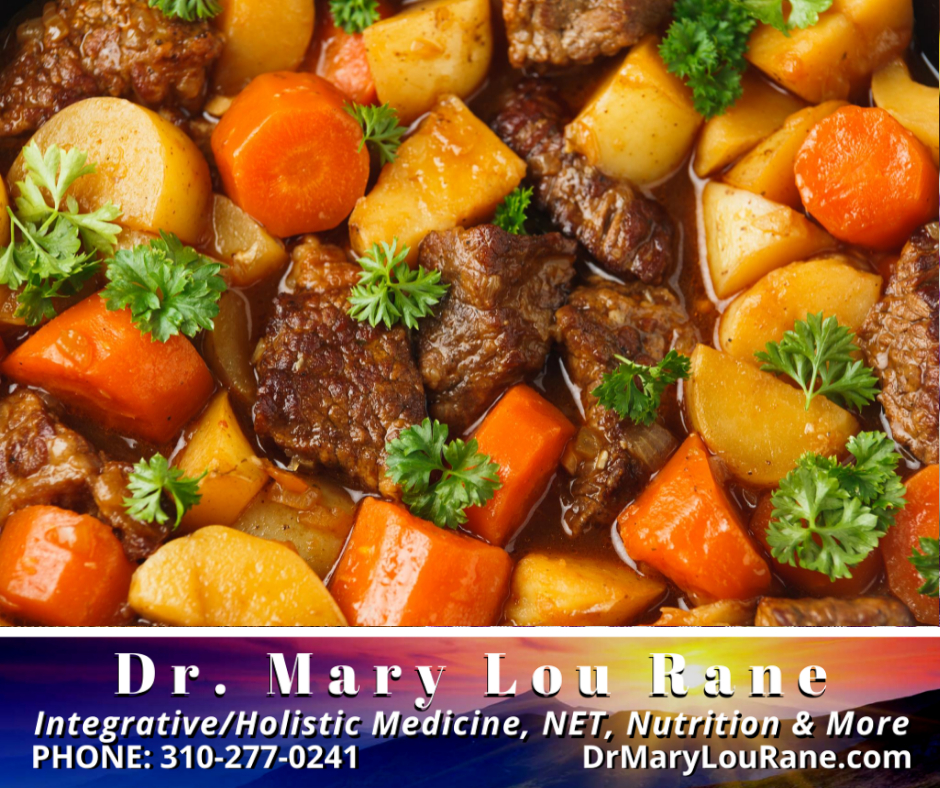
Ingredients:
1 tablespoon of ghee infused with garlic
2 tablespoons of Tomato paste
1 tablespoon of gluten-free flour
2 tablespoons tamari sauce
2 slices of Low-sodium bacon
1lb to 1.5 lbs of Beef stew meat or boneless beef chuck
1/2 cup of Dry red wine
2 cups of Low FODMAP broth
2 cups of Baby sweet potatoes
1.5 cups of Baby carrots
1 tablespoon of Fresh thyme leaves (or 1 teaspoon of dried thyme)
Cooking Instructions:
Step 1. Cook the bacon in a large skillet over medium heat with the ghee. Cook until bacon is crisp. Use tongs to remove the bacon from the skillet to the slow cooker.
Step 2. Sear the cubed beef in the same pan you used to cook the bacon. Sear on each side until browned, about 1 minute per side. Transfer the browned beef and remaining fat to the slow cooker.
Step 3. Prepare the liquid in the now-empty skillet. Add tomato paste and red wine and whisk. Slowly add in the combination of gluten free flour, low FODMAP broth, and tamari sauce while whisking until smooth. Transfer the liquid to the slow cooker.
Step 4. Add the sweet potatoes and carrots and cook. Add the veggies and thyme to the slow cooker. Stir to mix. Cook on low for 6-8 hours, high for 4-5 hours, or until the beef and veggies are tender.
Voila! Now you can season to taste with salt and pepper and dig in.
Grilled Chicken Pesto Pasta with Roasted Tomatoes (serves two)
Ingredients:
16 Cherry tomatoes
6 tablespoons of ghee with garlic
2 tablespoons of Lemon juice
8 oz of Brown rice rotini or penne
2 large (1.5 lbs) of Boneless and skinless chicken breasts
1 teaspoon of Dried oregano
1 1/2 cups of Fresh basil leaves
1/4 cup of Fresh chives
1/4 cup of Pine nuts
Cooking instructions:
Step 1. Preheat oven to 350° F. Spread cherry tomato halves evenly in ghee onto your sheet pan. Roast until the skins on your tomatoes are wrinkled and lightly caramelized. Begin to cook your pasta according to the package instructions.
Step 2. Heat grill or large skillet. Toss chicken breasts, ghee, and oregano in a large bowl and mix. Grill chicken until cooked. Allow chicken to cool before slicing.
Step 3. Use a blender to blend basil, chives, pine nuts, lemon juice, and ghee until smooth.
Step 4. When the pasta is done cooking, drain it and return it back to the pot. Add the pesto sauce you blended to the pasta and stir until the pasta is well-coated.
Step 5. Serve the pasta topped with sliced chicken breast and oven-roasted tomatoes.
Bon Appétit!
Low-Residue and Low-Fiber Diet Recipes
Take advantage of these tasty Low-Residue/Low-Fiber recipes. Since you’re aiming to eat low-fiber, the Vegetable Pasta Soup and Honey and Herb Chicken recipes are super easy as the ingredients used are limited.
Vegetable Pasta Soup (serves one)
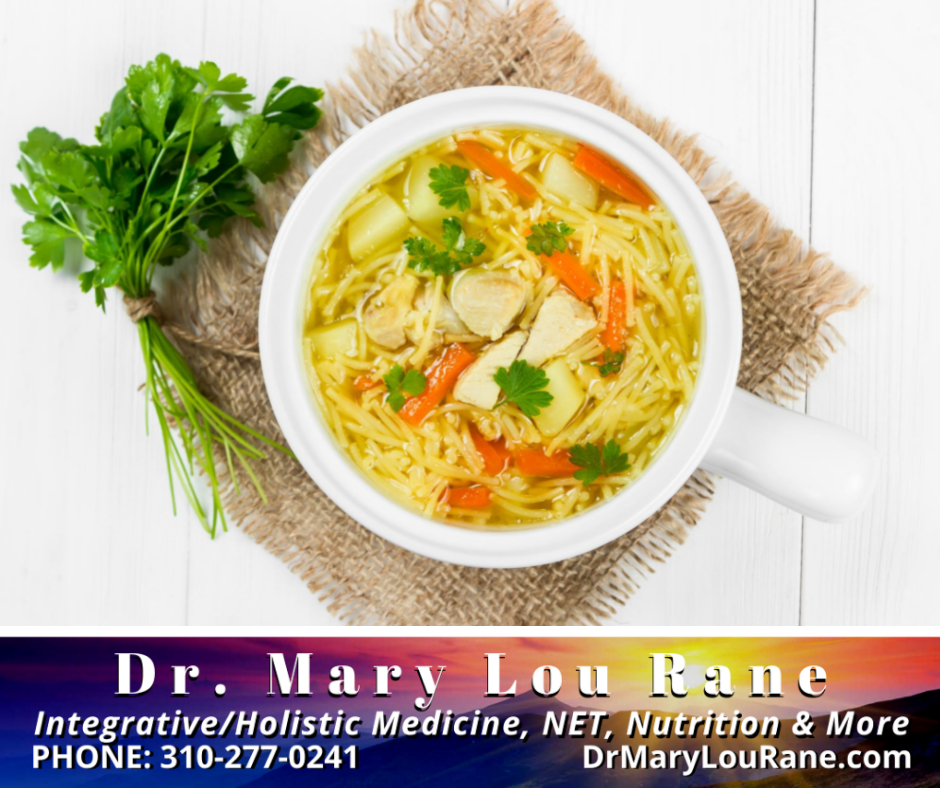
Ingredients:
5 cups of Chicken broth
1/2 cup of Tomato without skin or seeds
1/2 cup of Cooked gluten-free pasta
1 bunch of Asparagus tips
1 large Carrot
1 large Sweet Potato
Cooking instructions:
Step 1. Use a small saucepan to bring the broth, carrot, and sweet potato to a boil. Then, reduce heat and cook until veggies are tender.
Step 2. Add tomatoes and asparagus tips to the saucepan and let cook until tender.
Step 3. After tomato and asparagus tips are fully cooked, stir in the cooked pasta and cook until everything is heated to your standards.
You may add any preferred meat to this recipe for a bit more protein if you’re inclined to!
Honey and Herb Chicken (serves two)
Ingredients:
1 lb of Skinless chicken breast halves
2 tablespoons of Lime juice
2 tablespoons of Chopped fresh coriander
1 tablespoon of Honey
Cooking instructions:
Step 1. Using a meat tenderizer, pound each chicken breast into a 1/2-inch thick cut.
Step 2. Combine lime juice, coriander, and honey in a small bowl. Then, brush the chicken breasts with your honey glaze and some melted ghee.
Step 3. Grill or cook the chicken breast in a large skillet for 5 minutes on each side, or until the chicken reaches an inner temperature of 165° F.
Dinner is now served! You can serve this delicious Honey and Herb Chicken recipe right away with some rice or in a salad.
Gluten-Free and Dairy-Free Diet Recipes
Going on a gluten-free and dairy-free diet can be pretty tough because it limits the readily-available ingredients you need to make the diet work. The Pork Chops in Cranberry Sauce and Slow Cooker Sloppy Joes recipes are both simple and delicious, and contain ingredients that are easy to find gluten-free and dairy-free!
Pork Chops in Cranberry Sauce (serves four)
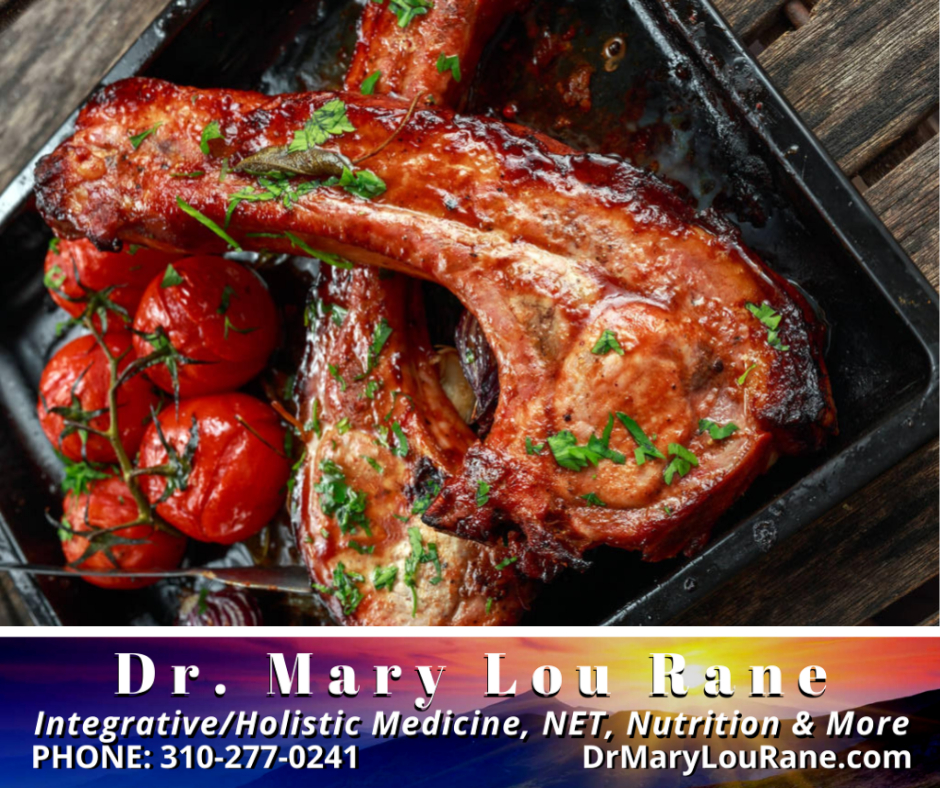
Ingredients:
1 tablespoon of ghee
1/2 cup of Diced white onion
4 Bone-in pork chops
1 cup of Canned cranberry sauce
1/4 cup of Tamari sauce
1 tablespoon of Brown sugar
Cooking instructions:
Step 1. Preheat oven to 400°F. Heat a skillet with ghee on the stovetop, then add the onion. Let onion fry for a few minutes.
Step 2. Sear each side of the pork chops. Once seared, cook the pork chops and onion together until the meat has browned and the onion is translucent. Remove from heat.
Step 3. Whisk the cranberry sauce, tamari sauce and brown sugar in a small bowl. Once mixed, pour sauce over the pork chops and throw the skillet into the oven.
Step 4. Leave the skillet uncovered and let it cook for 20 minutes. Once the pork chops have an internal temperature of 145°F, dinner is served!
Serve these sweet and tasty pork chops with sweet potatoes, or a side salad!
Slow Cooker Sloppy Joes (serves two)
Ingredients:
1/2 lb of Extra-lean ground turkey
1/4 of diced small yellow onion
1/4 cup of diced yellow or orange or red bell pepper
1 tablespoon of ketchup
1/2 tablespoon of mustard
1/2 tablespoon of Dark brown sugar
2 Gluten-free hamburger buns
Any other gluten-free and dairy-free toppings of your choice (dairy-free cheese or pickles)
Cooking instructions:
Step 1. Use a slow cooker and add all the ingredients into the pot. Stir well to combine.
Step 2. Cover the slow cooker with a lid and let it cook on low for 6-8 hours (or 4 hours on high). Make sure to stir well every couple of hours to break up clumps of meat.
Step 3. Toast your gluten-free hamburger buns, add your preferred toppings and get ready to munch!
Mediterranean Diet Recipes
Some Mediterranean dishes are pretty time-consuming, as you want to make a meal without processed ingredients and with whole foods instead.
So prepping the ingredients for your meal can take a while. However, the Chickpea Tuna Salad and Mediterannean Salmon recipes are relatively simple and quick to make!
High-Protein Chickpea Tuna Salad (serves one)
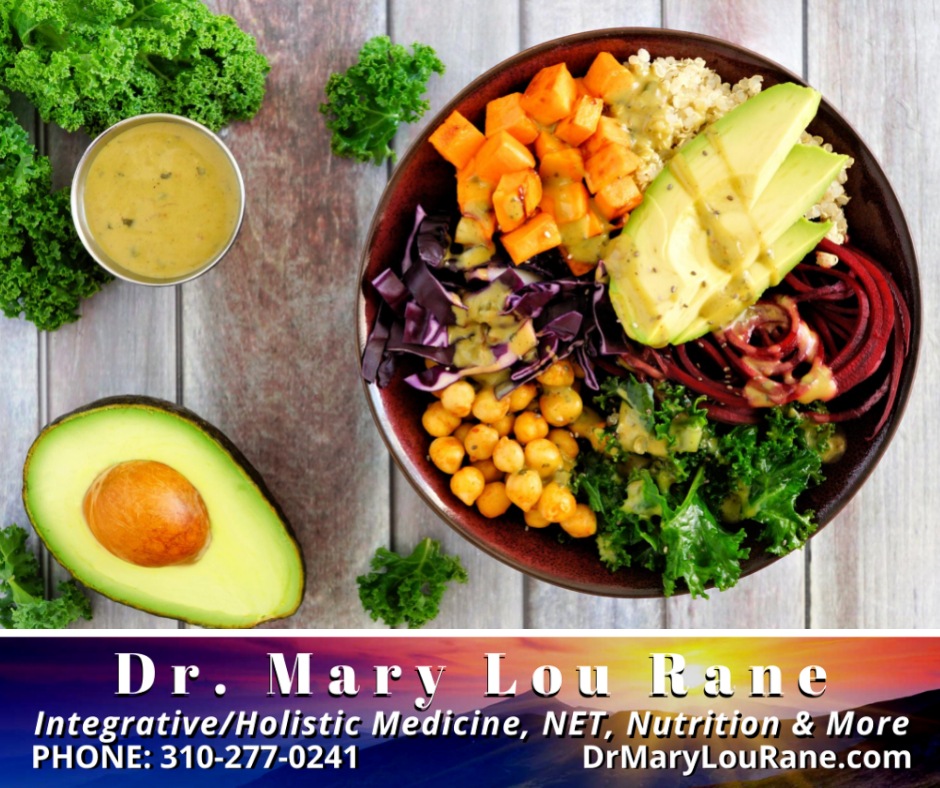
Ingredients:
1/2 cup of Canned tuna in brine, drained
1 1/2 cup of Canned chickpeas, rinsed and drained
2 Chopped tomatoes
1 Chopped cucumber
1 Jalapeno
1 Minced garlic clove
1 cup of Chopped greens (spring mix, spinach or kale, whichever you like best!)
1/2 Chopped small red onion
1/2 cup of Pitted olives
1 tablespoon of ghee
1/2 teaspoon of Dry basil
1 tablespoon of Lemon juice
Cooking instructions:
Step 1. Chop tomatoes, cucumber, onion, and your choice of greens.
Step 2. Fully drain tuna and chickpeas of its brine, then rinse the chickpeas.
Step 3. Add all your ingredients to a bowl. Garnish with melted ghee and lemon juice, then stir. Top with salt and pepper, then dig in!
Remember, you can get creative and add any other ingredients you like, or change up the protein source to whatever you like!
Mediterranean Salmon with Caper Butter (serves four)
Ingredients:
4 (6 oz) Salmon fillets
4 tablespoons of salt
1/2 teaspoon of black pepper
1 lemon, 6 lemon slices
3 tablespoons of salted butter
2 tablespoons of jarred capers, drained
1 grated garlic clove
To garnish: finely chopped Italian parsley, chives, oregano or thyme
Cooking instructions:
Step 1. Preheat oven to 325°F. While the oven preheats, mix together 4 cups of water and 3 tablespoons of salt in a dish. Place salmon in dish and let soak for 15 minutes.
Step 2. Use a baking sheet and place a large sheet of aluminum foil on the baking sheet. Brush the foil with melted ghee. Pat the salmon fillets dry and place them on the baking sheet. Sprinkle the salmon with some more salt and fresh ground pepper, then place the lemon slices and fresh herbs around the salmon (not on top). Close and seal the foil around your salmon fillets.
Step 3. Bake salmon fillets for 10 minutes. Open the foil and let the steam release, then cover and bake again for 3-6 minutes. The internal temperature of the salmon should be between 125F and 130F.
Step 4. Melt your butter over low heat. Once your better is melted, toss in the capers and garlic, cook for about 3-4 minutes.
Step 5. When the salmon is fully cooked, use the lemon slices to squeeze any excess lemon back onto the salmon. Use your caper butter sauce over each salmon fillet.
Garnish with your chosen herbs, and you have yourself a healthy meal filled with healthy fats and fish oil!
Specific Carbohydrate Diet Recipes
With the SPC diet, since you’re limiting a lot of carbs, it can be difficult to find recipes with easily accessible ingredients or time to prepare your meals. The Turkey Burger Bowl and Oven-Roasted Whole Chicken recipes are quick and easy to prepare, and you’re only eating good carbs!
Turkey Burger Bowl (serves two)
Ingredients:
4 oz of lettuce
1lb of ground turkey
1 teaspoon of garlic powder
1 teaspoon of onion powder
1/2 cup of sliced grape tomatoes
1/2 cup of pickles
1/2 of sliced small red onion
1/2 cup of pitted kalamata olives
1 sliced avocado
1/2 tablespoon of ghee
Cooking instructions:
Step 1. Heat a large skillet on medium heat with 1/2 a tablespoon of ghee Toss ground turkey into your skillet and drizzle in some garlic powder, onion powder, and salt.
Step 2. Saute the ground turkey until it becomes brown. Meanwhile, divide your lettuce into 2 bowls.
Step 3. Wash and slice your grape tomatoes, red onion, and avocado.
Step 4. Divide the veggies and ground turkey into your two bowls. Drizzle with some melted ghee and condiments of your choice and enjoy!
Oven-Roasted Whole Chicken (serves six)
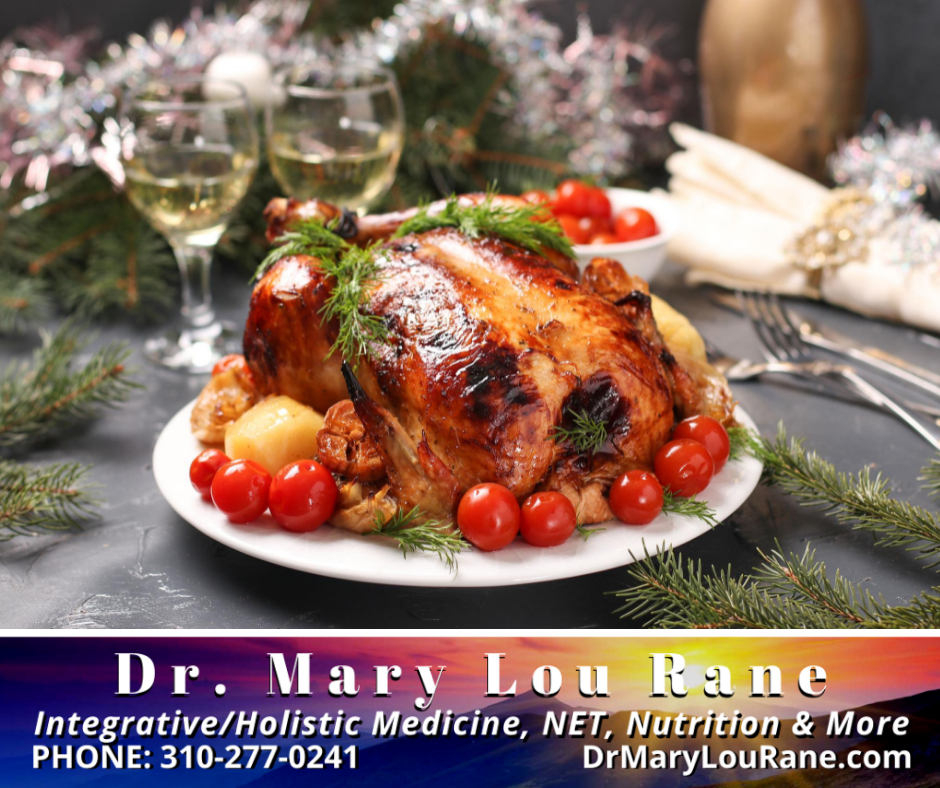
Ingredients:
1 whole chicken, 2-3 lbs
1 bunch of fresh thyme
1 lemon, halved
1 head of garlic
1 medium onion, halved
2 tablespoons ghee
Cooking instructions:
Step 1. Preheat oven to 425°F. Remove the insides of the whole chicken and rinse the chicken inside and out. Pat chicken dry after. After dried, place the whole chicken in a baking dish.
Step 2. Thoroughly use salt and pepper inside of the chicken. Stuff the chicken cavity with the bunch of thyme, the 2 lemon halves, and the garlic. Brush the outside of the chicken with ghee, and sprinkle with salt and pepper.
Step 3. Tie the chicken’s legs together with butcher’s string and tuck wings under body of chicken. Place each onion half into the corners of the dish.
Step 4. Allow the chicken to roast for 1.5 hours, or until the juices run clear.
Allow the chicken to cool slightly, then serve with your side of choice!
More Ulcerative Colitis Diet Recipes…
Did you enjoy reading this article and learning more about what you can eat when you have a gut disease like UC? Are you interested in learning more easy and mouthwatering recipes on the diet types I covered in this article?
Say no more! Reach out to me and request some additional help, tips, and recipes for managing UC and other Inflammatory Bowel Diseases by clicking here, or calling me at (310) 277-0241.




